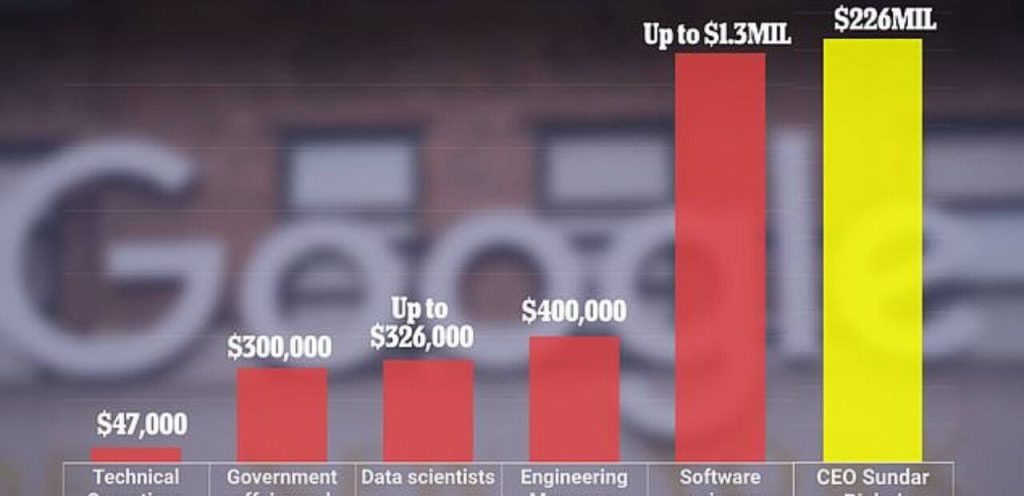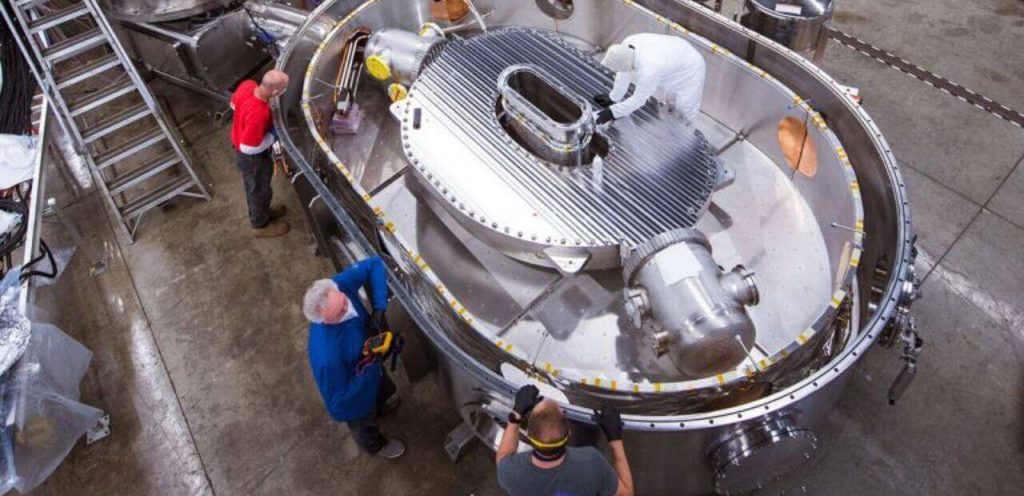The software that made landing on the Moon possible was created by Margaret Hamilton, a software engineer at the MIT Instrumentation Laboratory. Margaret Hamilton, a renowned software engineer, played a pivotal role in the Apollo program by developing the on-board flight software for NASA.
Her groundbreaking work at the MIT Instrumentation Laboratory laid the foundation for the software that was essential for the success of the Apollo lunar missions. Hamilton’s expertise and innovative coding techniques were instrumental in ensuring the reliability and functionality of the Apollo Guidance Computer, a crucial component in the historic moon landing.
This remarkable achievement not only catapulted Hamilton into the annals of space exploration history but also showcased the pivotal role of software engineering in realizing mankind’s greatest achievement—landing on the Moon.

Credit: www.usatoday.com
Unveiling Margaret Hamilton – The Pioneering Software Engineer
Margaret Hamilton, an unsung heroine of the Apollo program, played a pivotal role in the historic moon landing. Her groundbreaking work as a software engineer was instrumental in enabling the successful Apollo 11 mission, marking a significant milestone in human space exploration.
Introduction To Margaret Hamilton
In the male-dominated field of engineering during the 1960s, Margaret Hamilton emerged as a trailblazer. She made remarkable contributions as a software engineer, defying the norms and carving a path for women in STEM.
Her Role In The Apollo Program
Margaret Hamilton led the Software Engineering Division of the MIT Instrumentation Laboratory, where she and her team developed the on-board flight software for NASA’s Apollo program. Her innovative coding and rigorous testing were crucial in ensuring the reliability and success of the Apollo Guidance Computer, the primary navigation system that guided the lunar module to a safe landing on the moon.
The Significance Of Margaret Hamilton’s Innovations
Margaret Hamilton, the brilliant software engineer, played a pivotal role in making the historic moon landing possible. Her exceptional coding skills and innovative mindset revolutionized the field of software engineering and left an indelible mark on space exploration. When it came to programming the Apollo Guidance Computer, Hamilton faced numerous challenges. The computer was responsible for critical tasks such as calculating navigation data, maintaining spacecraft stability, and executing commands accurately during the lunar descent. Hamilton’s coding breakthroughs introduced advanced error detection and recovery systems. She implemented priority scheduling techniques, allowing the computer to handle simultaneous tasks efficiently and prevent overload. Meticulous and forward-thinking, Hamilton also introduced the concept of “asynchronous software,” which allowed instructions to be executed out of order. This innovation proved crucial in handling unexpected situations, ensuring the spacecraft’s safety during the mission. Margaret Hamilton’s inventions and contributions went beyond just the moon landing itself. She played a fundamental role in advancing the entire field of software engineering, introducing concepts and techniques that are still used today. Her work on the Apollo Guidance Computer pioneered the reliability and efficiency required for complex space missions. Hamilton’s software innovations became a foundation for future space exploration endeavors, enabling astronauts to safely navigate and explore the outer realms of the universe. Moreover, Hamilton’s impact extends far beyond her technical accomplishments. As a female engineer in a predominantly male industry, she broke barriers and inspired countless women to pursue careers in STEM fields. The significance of Margaret Hamilton’s innovations cannot be overstated. Her work laid the groundwork for future generations of engineers, shaping the way we approach software development and highlighting the power of human ingenuity in achieving groundbreaking feats.
Challenges Faced And Overcome
The Apollo mission to the moon was an extraordinary feat of engineering, requiring innovative solutions to overcome numerous challenges. One of the key challenges faced by the engineers involved in the mission was the development of complex software capable of guiding the spacecraft and ensuring a successful landing on the moon.
Complexities Of Space Software
The development of software for the Apollo missions presented unique complexities. The engineers had to design software that could withstand the harsh conditions of space, including extreme temperatures, radiation, and the absence of gravity. This was no easy task, considering the limited computing power available at that time. Furthermore, the software had to be reliable and capable of performing complex calculations in real-time. It needed to navigate the spacecraft, control the lunar module, and execute various critical tasks throughout the mission. Failure was not an option.
Critical Moments During Apollo Missions
There were several critical moments during the Apollo missions where the software played a crucial role in ensuring the success of the mission. One such moment was the lunar descent phase, where the software had to guide the lunar module safely to the surface of the moon. During the descent, the software was responsible for calculating the precise trajectory, monitoring the spacecraft’s position, and adjusting the thrust of the engines. Any miscalculation or error in the software could have resulted in a catastrophic crash or abort of the mission. Another critical moment was the moon landing itself. The software had to accurately determine the optimal landing site, adjust the descent rate, and control the module’s engines to achieve a soft touchdown on the lunar surface. Thanks to the ingenuity and dedication of the engineers, these critical moments were successfully overcome. The software performed flawlessly, allowing the Apollo astronauts to land on the moon and make history.
Legacy And Influence On Modern Technology
The successful moon landing in 1969 was a monumental achievement for humanity. It wouldn’t have been possible without the groundbreaking work of Margaret Hamilton, a brilliant software engineer. Her contributions to the Apollo program and the development of on-board flight software revolutionized the field of software engineering and had a lasting impact on modern technology.
Impact On Software Engineering
Margaret Hamilton’s work on the Apollo program laid the foundation for modern software engineering. She led the Software Engineering Division at the MIT Instrumentation Laboratory, where she and her team developed innovative software solutions that made the moon landing a reality. Their work introduced concepts such as error detection and recovery, priority scheduling, and real-time systems, which are still vital in today’s software development practices. The Apollo Guidance Computer, designed under Hamilton’s guidance, was the first computer to use integrated circuits, making it smaller, faster, and more reliable than previous machines. This breakthrough set a new standard for computer engineering and paved the way for the development of smaller, more powerful, and efficient devices that we use today.
Inspiration For Future Generations
Margaret Hamilton’s remarkable achievements continue to inspire future generations of engineers and software developers. Her dedication, problem-solving skills, and innovative thinking serve as a shining example of what is possible when technology and human ingenuity come together. Hamilton’s legacy extends beyond her crucial role in the Apollo program. Throughout her career, she emphasized the importance of teamwork, meticulous testing, and careful documentation. These principles have influenced software engineering practices and methodologies, ensuring the reliability and safety of complex systems we rely on today. In conclusion, Margaret Hamilton’s contributions to the software engineering field and the success of the Apollo program have left an indelible mark on modern technology. Her groundbreaking work continues to shape the way we develop and implement software, and her dedication serves as a constant reminder of the potential for innovation and progress in the field of engineering.
Recognition And Awards
Recognition and Awards:
Honors For Hamilton’s Contributions
Margaret Hamilton, the software engineer behind the success of the Moon landing program, was honored for her outstanding contributions.
Accolades In The Tech Industry
Hamilton received recognition and awards from the tech industry for her groundbreaking work in developing the software that made landing on the Moon possible.

Credit: www.wired.com
Remembering The Moon Landing Through Hamilton’s Eyes
Margaret Hamilton, an engineer at the MIT Instrumentation Laboratory, developed the software that made the moon landing possible. Her pioneering work with the Apollo Guidance Computer played a crucial role in the success of the Apollo missions. Through her innovative software, Hamilton made history by helping astronauts land on the moon.
Personal Reflections On The Achievement
Margaret Hamilton, the software engineer behind the Apollo program, played a crucial role in landing humans on the moon.
Stories From The Mission Control Room
As the director of the Software Engineering Division at MIT, Hamilton’s innovative software paved the way for the success of the Apollo missions.
Hamilton’s Ongoing Work And Advocacy
Margaret Hamilton, renowned for her pivotal role in developing the software that enabled the successful moon landing, continues to advocate for advancements in technology and STEM education. Her ongoing work and advocacy have significantly impacted the fields of software engineering and space exploration.
Current Projects And Initiatives
Margaret Hamilton is involved in several current projects that focus on pushing the boundaries of software engineering and space exploration. She is dedicated to fostering innovation in these fields through her active involvement in various initiatives.
Promoting Stem Education
With a strong commitment to promoting STEM education, Margaret Hamilton tirelessly advocates for the importance of science, technology, engineering, and mathematics. She aims to inspire and empower the next generation of innovators and problem solvers, emphasizing the critical role of STEM education in shaping the future.
/cdn.vox-cdn.com/uploads/chorus_asset/file/15385703/Margaret_Hamilton_in_action.0.0.1540775705.jpg)
Credit: www.vox.com
Frequently Asked Questions
Who Started The Moon Landing Program?
Margaret Hamilton, an American software engineer, led the team that started the Moon landing program.
Who Was The Programmer Of The Apollo 11 Program?
The programmer of the Apollo 11 program was Margaret Hamilton, pioneer software engineer for NASA.
What Program Was Created To Land People On The Moon?
The Apollo program was created to land people on the Moon, led by software engineer Margaret Hamilton.
What Computer Helped The Moon Landing?
The Apollo Guidance Computer, developed by Margaret Hamilton, helped the Moon landing. It was reliable and faster than any astronaut in calculating multiple commands. The Apollo Guidance Computer was the most reliable computer ever built.
Faq 1: Who Created The Software That Made Landing On The Moon Possible?
The software that made landing on the moon possible was created by Margaret Hamilton, a software engineer at MIT.
Faq 2: What Program Was Created To Land People On The Moon?
The program created to land people on the moon was the Apollo program, which aimed to establish the technology for manned lunar exploration.
Faq 3: What Computer Helped The Moon Landing?
The Apollo Guidance Computer, developed by Margaret Hamilton and her team, played a crucial role in the moon landing, calculating commands faster than any astronaut.
Faq 4: What Were The Goals Of The Apollo Program?
The goals of the Apollo program extended beyond landing Americans on the moon. They included establishing national interests in space and achieving preeminence in space for the United States.
Faq 5: What Contributions Did Margaret Hamilton Make To The Apollo Program?
Margaret Hamilton led the NASA software team that landed astronauts on the moon. Her ingenious software innovations were instrumental in the success of the Apollo missions.
Faq 6: What Role Did Margaret Hamilton Play In The Moon Landing?
As the director of the Software Engineering Division of the MIT Instrumentation Laboratory, Margaret Hamilton led the development of on-board flight software for NASA’s Apollo program.
Conclusion
Margaret Hamilton, an exceptional software engineer, played a pivotal role in the success of the Apollo moon missions by developing the sophisticated software that made landing on the moon possible. Her groundbreaking work continues to be an inspiration in the field of software engineering and space exploration.









